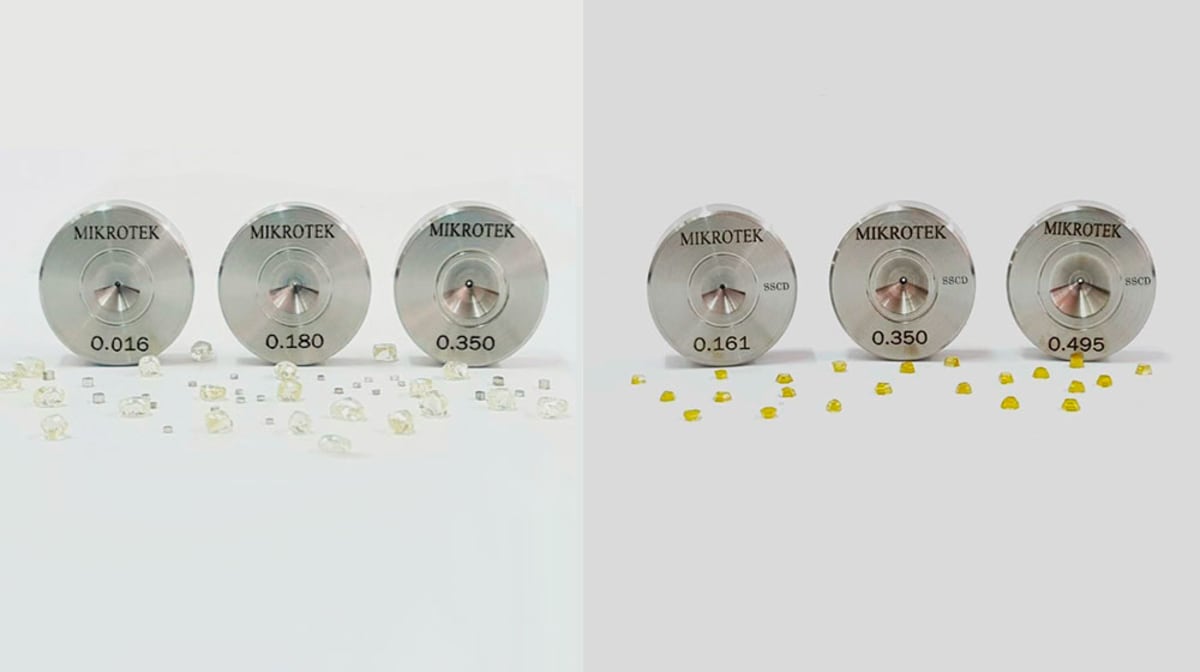Natural vs synthetic: choosing the right diamond die for your application

Selecting the ideal diamond die for wire drawing
In wire drawing, precision and durability are critical to achieving high-quality results. Choosing the right diamond die—whether natural or synthetic—can impact production efficiency, wire quality, and overall costs. Understanding the key differences between natural diamond dies and synthetic diamond dies is essential for selecting the best option for your specific application.
Natural vs. synthetic diamond dies: an overview
Diamond dies are widely used in wire drawing due to their exceptional hardness, wear resistance, and ability to produce smooth, high-precision wires. Manufacturers typically choose between natural diamond dies and synthetic diamond dies, each offering distinct advantages depending on production needs.
Natural diamond dies: precision and longevity
Natural diamond dies are highly valued for their ultra-fine precision and extended lifespan. Their exceptional hardness allows them to achieve extremely close tolerances, making them ideal for fine wire production where accuracy is paramount.
Key benefits of natural diamond dies include:
✔ Superior surface finish: Produces ultra-smooth wires, reducing friction in downstream processes.
✔ Lower energy consumption: The low-friction properties of natural diamonds minimize resistance, cutting production costs.
✔ Cleaner work environment: Reduced metal dust generation lowers wire breakage risks and maintains cleaner operations.
These properties make natural diamond dies the preferred choice for industries requiring extreme precision, such as the medical, electronics, and aerospace sectors.
Synthetic dies: consistent quality and cost-efficiency
Synthetic diamond dies or single-crystal synthetic diamond dies, offer better wear resistance, high thermal stability, and thermal conductivity, making them ideal for high-volume production.
Advantages of synthetic diamond dies include:
✔ Longer lifespan: High thermal conductivity and wear resistance extend die life.
✔ Versatility: Suitable for a wide range of wire materials, including copper, aluminum, and steel.
✔ Cost-effectiveness: Synthetic dies provide a balance between durability and affordability, making them ideal for large-scale manufacturing.
Synthetic single-crystal diamonds are grown with a <111> orientation, reducing die profile distortion during wire drawing and enhancing the surface quality of the drawn wire.
Choosing the right diamond die for your needs
When selecting a diamond die, consider the following factors:
⁍ Material being drawn: Certain wire materials benefit more from either natural or synthetic dies.
⁍ Cost vs. performance: Natural diamonds offer superior precision, while synthetic diamonds provide better durability and affordability.
⁍ Wire diameter and finish requirements: Fine wire production often requires natural diamonds, while high-volume production benefits from synthetic options.
Mikrotek: expertise in custom die solutions
With decades of experience, Mikrotek specializes in providing customized diamond die solutions to meet the specific needs of wire manufacturers worldwide. Through ongoing R&D and innovation, Mikrotek continues to refine its dies, ensuring optimal performance and reliability.
Whether you need precision natural diamond dies or durable synthetic solutions, Mikrotek offers expertise you can trust. Contact Mikrotek today to find the perfect diamond die for your application.
Meet Mikrotek's team at wire Eurasia in Istanbul from April 9 to 12—Hall 4, Booth 413/A.





